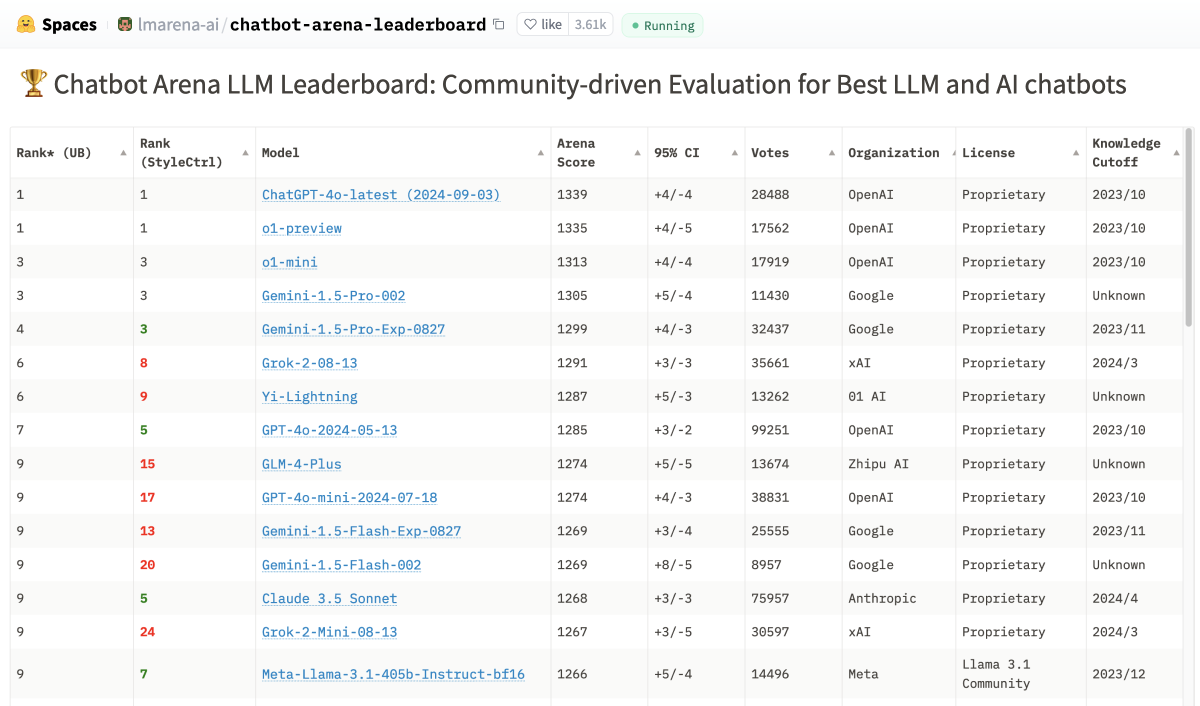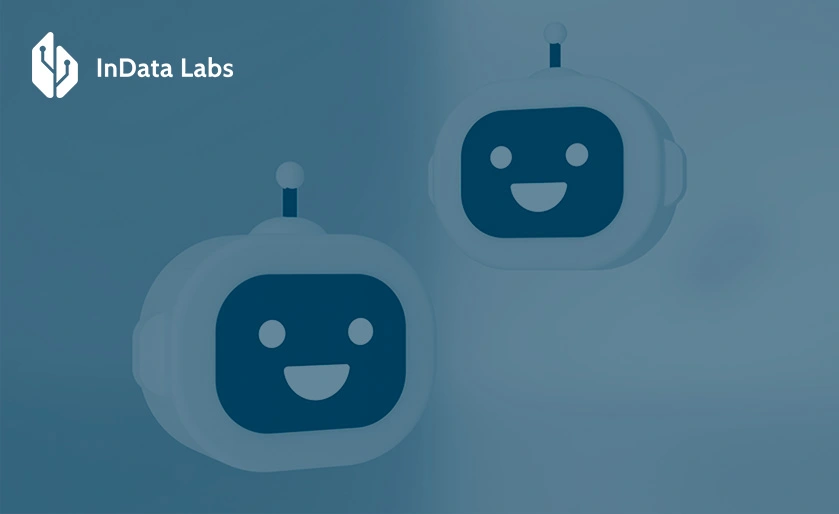The proliferation of advanced technologies and tools has made AI business solutions accessible to companies of all sizes across all industries. The result is operational efficiency, cost reduction, improved customer service, and innovation. In this transformative context, generative AI models have emerged as a revolutionary solution, driving further advancements and opportunities for businesses to excel. This article reveals Generative AI applications and benefits, different models, and development specifics.
GenAI is a burning topic proven by numerous research from McKinsey or Gartner and success cases from well-known companies. Two major questions arise here. What are generative AI models? And how do generative AI models work? They may be defined as a product of machine learning development that mimics the learning and decision-making of human brains. And as a result, we receive realistic and contextually accurate content.
Generative AI benefits for business
McKinsey’s research shows that GenAI has the potential to automate workflows that take up to 70% of employees’ time. The research especially highlights the areas of customer service, marketing and sales, software development, and research and development. This demonstrates the transformative power of AI for business. With its assistance, companies can streamline operations, reduce costs, and enhance productivity across various departments.

Source: Unsplash
A service to win the hearts of customers
The ability to improve customer service is one of the most prominent benefits of GenAI models. For this purpose, AI chatbots move to the forefront. They are the most common in E-commerce and retail. However, they can serve in all industries where businesses communicate with customers.
Besides that, for internal usage covering HR and onboarding goals. AI chatbots are capable of handling a high volume of customer inquiries simultaneously. They provide instant responses that are both accurate and contextually relevant. And have no queues for assistance, great emphasis, and faster resolution times. One more important function of bots is providing personalized recommendations of products and services.
More and more companies are introducing these smart assistants. For example, KLM Royal Dutch Airlines has a BlueBot, and Bank of America utilizes a virtual assistant named Erica. Small and medium-sized businesses also should not neglect them. Quality communication is even more important with a smaller audience. Since custom AI chatbot development can be costly, there are out-of-box solutions in the market. They can be implemented faster with less investment. And quickly start to bring results.
Meet InData Labs’ virtual assistant, Aurora Borea who automates customer support and schedules appointments, facilitating the work of the company and sales team.
Cost reduction and efficiency boost of new developments
Generative AI is able to simplify and reduce the cost of some processes that require large resources. For example, we can take the fields of pharmaceuticals and materials science. In their research, Gartner claims that over 30% of new drugs and materials will be discovered using this technology.
GenAI models can analyze vast datasets, generate new molecular structures, simulate how different molecules interact with each other and predict their properties, and develop new materials with specific features. The successful case has been shown by the biotechnology company Insilico Medicine. They launched the full-fledged AI process from the identification of molecules that a drug compound could target to selecting candidates for clinical trials based on data.
Generative AI is also making significant strides in the development of physical products across various industries. Starting with packages and ending with complex items like equipment and car components.
McKinsey estimates that this technology can boost productivity by $60 billion in product research and design alone. While product development cycle times can be reduced by up to 70%. Imagine high-fidelity GenAI 3D models of products that you can quickly create and get feedback from customers without the need to produce them. Then, fine-tune every element efficiently and without haste.
Technology can analyze not only internal databases but also market trends and discover customer desires that the company may not know about. The model combines this knowledge with the ideas of designers to create a new product concept.
Automation of operational activities

First of all, this is data entry and management, like in CRMs. AI assistance can reduce the risk of human error, speed up processes, and provide deeper insights. For instance, Salesforce has developed its own Einstein model for this purpose. Other tasks include scheduling appointments, sending reminders, managing emails, and processing documents. Literally, all of this takes a lot of time to do manually.
Optimization of supply chain management is an individual case. It encompasses a lot of complex processes like demand forecasting, inventory management, logistics, and supplier coordination. Issues in one of them can lead to large losses. Such giants like Walmart and Amazon admit to employing AI-driven systems for sales forecasting, identifying potential supply chain disruptions, optimizing warehouse operations, and managing inventory. Accenture’s research shows that generative AI can impact 43% of supply chain tasks, with 29% of tasks being automated and 14% being augmented, leading to significant growth in productivity.
Generative AI development
Generative AI development is a symphony of advanced neural networks, sophisticated algorithms, and vast datasets. These models are meticulously designed to create new data samples that closely resemble a given dataset. Essentially, they learn from existing information and use this acquired knowledge to generate new, original content.
Types of generative AI models
There are different types of generative AI models, which are classified based on different criteria. According to their fundamental architectural categories, there are three main kinds of models:
- Generative Adversarial Networks (GANs). It consists of two neural networks: a generator and a discriminator. The generator creates synthetic data, while the discriminator evaluates its authenticity compared to real data. This adversarial process continues until the generator produces data that the discriminator can no longer distinguish from real data. GAN models are widely used for producing realistic images, videos, and audio files. An example is StyleGAN, developed by NVIDIA for creating beautiful visuals.
- Variational Autoencoders (VAEs). This model uses an encoder-decoder architecture. The encoder compresses input data into a latent space while the decoder reconstructs the data from this latent representation. VAEs are effective for generating data that resembles the input data and are commonly used in image and text generation. Particularly such a model can be used in drug discovery and prototyping.
- Transformer models handle sequential data and understand context over long distances. They use mechanisms such as self-attention to weigh the importance of different parts of the input data. Transformer models are highly effective in Natural Language Processing (NLP) tasks. Large Language models (LLMs) refer to this category. A leading example is GPT-3 by OpenA for creating delightful texts.
Despite the nuances, all these models work on the same principle in terms of training and generation phases. The same important phase is the evaluation of outputs. How realistic and high-quality are they? No biases, ethical issues, or harmful content.
How do we define top generative AI models?
That’s the question of how to define the best model. For example, the Chatbot Arena Leaderboard lists all available LLMs. For the moment, the total number of models is 114. The winner is determined in anonymous, randomized battles between them. That makes the assessment as objective as possible. The highest Arena Score, 1287, belongs to GPT-4o, then goes Claude 3.5 Sonnet rated as 1271. The third place belongs to Gemini-Advanced, with a 1266 score.
In general, this platform is a good source for tracking updates to current models and learning about new ones. As you can see, text-to-text models are taking leading positions. They are powered by advancements in Large Language Model (LLM) development.

Without a doubt, ChatGPT within generative AI models is one of the most well-known tools. Both businesses and individuals use it as a smart assistant for different cases. Reuters here states that ChatGPT is already in use by more than 92% of Fortune 500 companies. For instance, Microsoft embeds this technology in the Azure Cloud and Microsoft 365 Copilot offering their clients more advanced opportunities. This widespread adoption is a testament to the applications of Large Language Models, which extend beyond simple text generation.
Final words
The advent of Generative AI signifies a significant shift in how businesses operate and innovate. Integrating these advanced models is not merely a trend but a transformative force driving substantial benefits across various domains. The examples provided illustrate the immediate impacts and long-term benefits that can be realized by adopting these technologies.
Different generative AI models offer unique capabilities for specialized applications based on business requirements. Companies can either develop custom generative models tailored to their specific needs or use existing models in their solutions. Developing a custom model ensures alignment with unique business challenges and goals, while using existing models reduces development time and costs, allowing for quick integration of advanced AI capabilities.
A reliable software partner can be instrumental in navigating the complexities of GenAI implementation. If you’re unsure about your specific requirements, AI consulting can help identify and address your needs, ensuring a tailored and effective strategy.
FAQ
-
Generative AI represents a significant advancement in Artificial Intelligence, including Machine Learning and Natural Language processing. GenAI models are engineered to create new outputs by learning from existing datasets. Here, we have diverse forms of content, such as text, images, music, videos, and code. Generative AI produces content that is both contextually relevant and mimics human-like creativity and coherence.
-
The market offers a wide array of generative AI models for producing diverse types of content. Some examples are:
- GPT is a widely recognized creation of OpenAI. It can produce text outputs of varying complexities. These include articles, lists, blog posts, and conversational content.
- DALL-E is another innovation from OpenAI. It represents a text-to-image system. The model enables users to create digital visuals from text descriptions.
- Stable Diffusion is an open-source project headed by Stability AI. The model transforms text and image prompts into lifelike visuals.
- LaMDA is a project from Google, that engages users in natural and engaging dialogues. It covers a wide range of topics, making conversations more fluid and interactive.
- StyleGAN is an NVIDIA creation. The model excels in producing images with the ability to control styles and features. This technique, known as “style mixing,” allows for remarkable customization.
- Codex is one OpenAI project. It is designed to assist with code creation and understanding. The model supports multiple languages such as Python, JavaScript, and others.
-
Yes, it is. GPT isan acronym for Generative Pre-trained Transformer. OpenAI created this Large Language Model, and it quickly gained worldwide recognition.
As a text-to-text system, it is pre-trained on open information from the global network, making its output logical and appropriate. Users can receive content of different complexity, such as answers, checklists, blog posts, and long-read articles. GPT utilizes the transformer architecture, which employs attention mechanisms to process and produce text.
-
Yes, ChatGPT can definitely be qualified as generative AI. It perfectly aligns with AI technology designed to generate new materials from human inputs. ChatGPT is widely recognized and used by both personal users and corporate entities. It works by grasping the context of a given input and producing human-like replies. This makes Chat valuable for a wide range of applications, from casual conversation to professional writing. The tool comes in both free and paid versions. The latter offers more advanced features and capabilities.
-
GPT (Pre-trained Transformer) is a kind of GenAI model created by OpenAI. These systems are designed to produce human-like text based on the input they receive. They grasp the meaning of each word in a phrase by considering the relationships between all words. GPT can respond to all the topics that were included in its learning data.
-
GenAI can be applied to many use cases. The most common are:
- Content creation is a major area. AI may produce texts, images, and videos. This is a good assistance for authors, marketers, designers, and sales.
- Communications with customers. GenAI can empower chatbots and virtual assistants to give better support, answer queries, and perform various tasks.
- Personalization in sales and marketing. With GenAI, businesses can improve recommendation systems for their products, services, and content and send personalized marketing messages.
- Exploration and research. GenAI models can create art and music, detect patterns, and make hypotheses.
-
No, Google itself is not a generative AI. However, Google develops and utilizes generative AI models as part of its services and products. Some of their GenAI models include BERT, T5, LaMDA, and Imagen. These models are integrated into various Google services, such as providing smart compose suggestions for email writing in Gmail and generating more natural and informative responses in Google Assistant. Businesses can also use them in their software products.
-
By employing LLM technology, generative AI can understand and generate human-like text, predict and create coherent and contextually relevant content, and perform tasks such as text generation, summarization, translation, and conversational responses. This enhances applications in customer service, content creation, and data analysis, making generative AI a powerful tool for various industries.
-
Yes, GPT is one of the most renowned Large Language models. As proof, It meets all the features of LLMs. First of all, it is a two-phase training on enormous data volumes. Such an approach gives more precise outcomes. As LLM GPT obtains a transformer architecture. It means that the model handles and creates text by considering the context of all words in a sequence. And finally, it’s a versatile tool capable of performing various language-related tasks.
-
LLM abbreviation signifies a Large Language model. It’s a prominent type of AI that recognizes and handles natural human language. As an output, models generate novel content how would a human do it. Developers train them on huge collections of data with tonnes of text, figures, and images. Applications of Large Language models are not limited to just creating different types of content. They might be utilized in AI chatbots for customer support, text translations, analysis and research, code scripts, and others.



